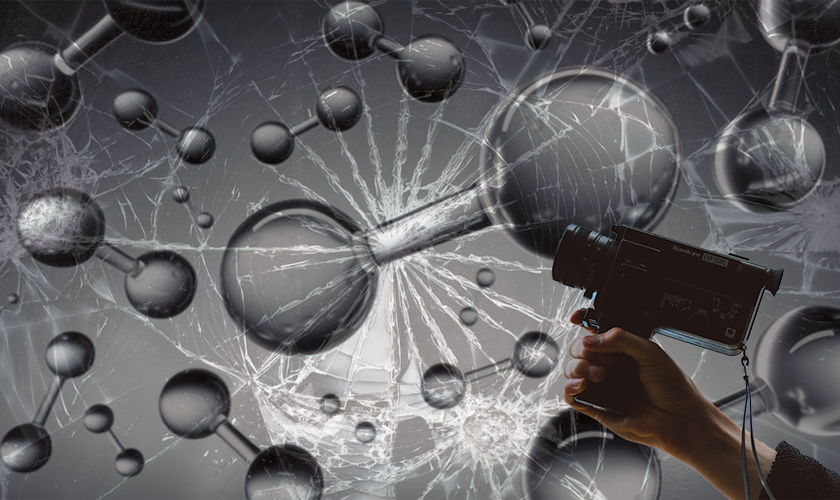Shattering Hydrogen Myths in ‘Glass Onion: A Knives Out Mystery’
While “Glass Onion” receives praise in Tinseltown, the movie does a disservice to those working to build a more sustainable world.
Warning: Spoilers ahead!
Although we’re big fans of actor Daniel Craig, we’d have to say the new film he stars in, “Glass Onion: A Knives Out Mystery,” is not helping the world’s efforts to fight climate change with clean and safe hydrogen. Unlike most reviews you’ll read, we’re not here to talk about the all-star cast, twisted plot and flashy storytelling. But we’ll give you our take on some important facts about hydrogen that are misportrayed in “Glass Onion” before the hit movie comes to Netflix.

In this murder mystery sequel to “Knives Out,” billionaire tech entrepreneur Miles Bron invents Klear – a clean hydrogen energy source he plans to launch to revolutionize the way people fuel their homes, despite caution from members of his company that it is unsafe. At the end of the movie, a crystal-like isotope of Klear is tossed into a fire and Bron’s entire mansion, possessions and credibility are destroyed in an explosion that seems to prove that Klear is too dangerous for public use.
While we appreciate that Hollywood is giving hydrogen the attention of a major motion picture, the plot of “Glass Onion” raises several far-fetched misconceptions about hydrogen safety that need to be debunked.
Does Anything Like Klear Hydrogen Exist?
Miles Bron was on to something with his business venture idea. Hydrogen can in fact be used as a climate-friendly fuel, by either running it through a fuel cell or by directly burning it. Once produced, hydrogen is stored as a compressed gas or cryogenic liquid.
However, a solid version of hydrogen like Bron’s invention is not commercially-viable today due to technical and cost hurdles. Bottom line, storing hydrogen as the kind of crystal you can stick in your pocket in “Glass Onion” is pure fiction.
Is Hydrogen Flammable?
Like all fuel sources, hydrogen is flammable. The movie insinuates that Klear’s high flammability potential makes it uniquely dangerous. However, if ignited, hydrogen burns out far faster than comparably sized oil or gas fires, and it will burn up and away much more quickly. As the heat from a hydrogen flame is not as hot as a hydrocarbon flame, the risk of a secondary fire is lower.
The movie also refers to the 1937 Hindenburg disaster as evidence that hydrogen is dangerously flammable, though hydrogen’s role in that tragedy has not been conclusive. Among the half-dozen current working theories on what caused the disaster, none of them point to hydrogen. By repeating earlier unconfirmed reports about hydrogen as the cause, “Glass Onion” loses points in our book for reinforcing this myth.
Can Hydrogen Leak?
The filmmakers unfortunately didn’t hold back from catastrophizing hydrogen with other false claims. Several characters perpetuate the misconception that hydrogen leaks more easily than other fuels. While hydrogen is a much smaller molecule than the methane in natural gas, studies have shown that it leaks from pipes at about the same rate. When it does leak, it escapes into the air and floats away, while natural gas pools near the leak, causing an explosion hazard.
Most hydrogen leaks are so small that they provide no hazard to human health or safety in any way. Larger leaks are exceptionally rare simply because they are so easy to identify using safety equipment. How often do you see gaping holes in a natural gas or propane pipe? The leakage rate in that scenario is the least of your worries.
Because hydrogen is much lighter than air, any leak would dissipate incredibly quickly, greatly reducing the severity of any type of serious fire or damage. By following appropriate codes and standards and using well-maintained equipment, hydrogen is incredibly safe and has far less chance for any type of event that would harm a human being, particularly when compared with fossil fuels. Hydrogen was clearly miscast here.
Hydrogen Is Essential to Decarbonizing the Global Economy
The need to reduce the world’s carbon footprint and transition to emissions-free renewable energy sources has never been more urgent than it is today. Green hydrogen alone cannot address the world’s emissions concerns, but we cannot fully decarbonize the economy without it. By providing a zero-carbon renewable energy that can be stored and transported over long distances and operated continually, green hydrogen solves the intermittency issues of solar, wind and batteries – making it possible to power forklifts, commercial trucks, airplanes, data centers, back-up power generation, industrial manufacturing and more.
That’s why we give this movie a five-star Pinocchio review. While sometimes there is truth in fiction, “Glass Onion” tells a fiction without the truth.
Have more questions about hydrogen safety? Contact us today.